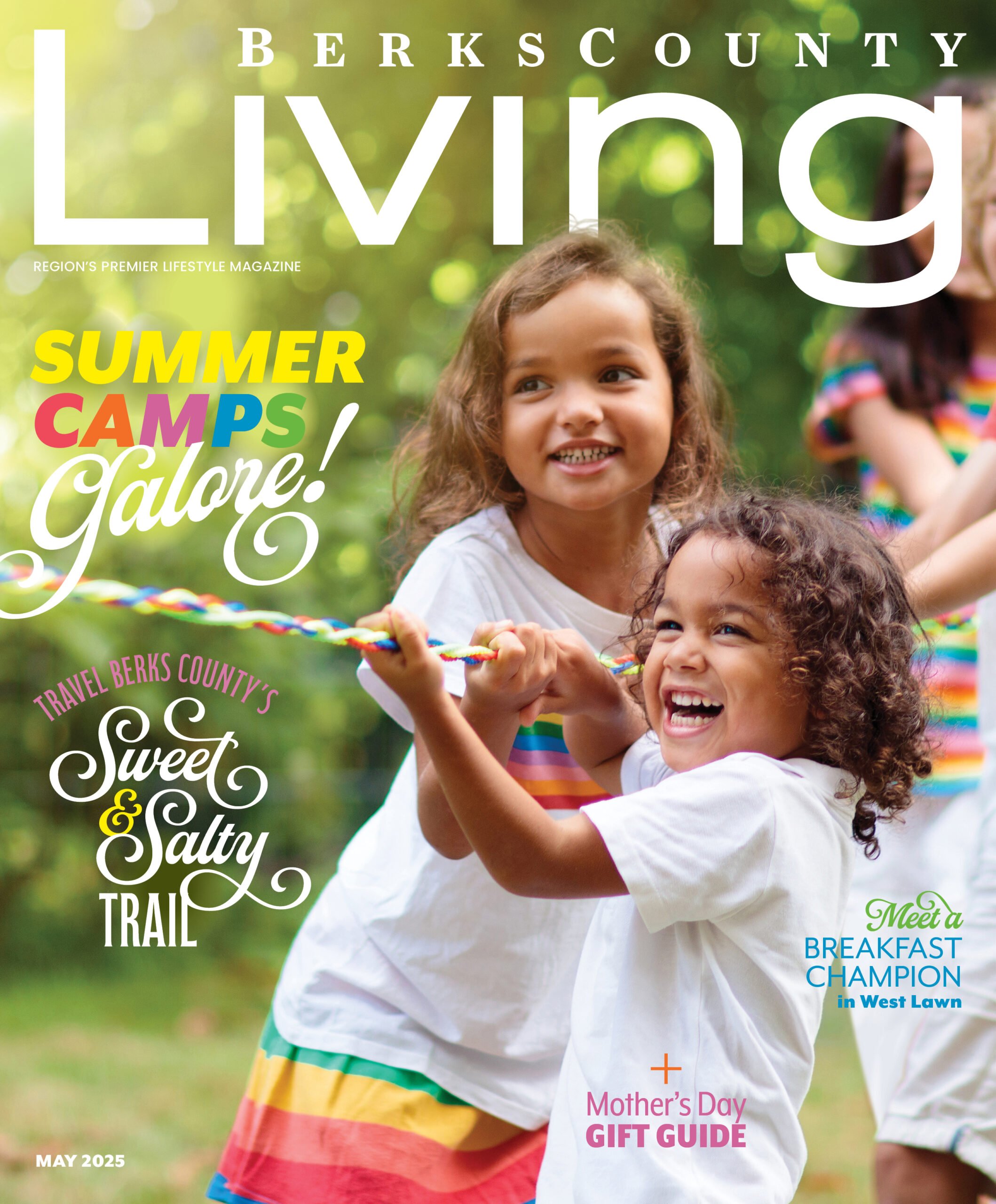When you think of a “smart house,” you think of one that’s filled with state-of-the-art technology. When you think of an “Arts and Crafts” house, you think of a particular period and architectural style. But sometimes, these two descriptions meld in a dwelling that’s neither high-tech nor representative of an era of architecture.
On the campus of Kutztown University (KU) in Maxatawny Township, just over the borough line, the KU President’s House boasts both these qualities in a structure that simultaneously exudes a sense of hominess and refinement.
The circa-1928 brick structure fronting Main Street has been home to the institution’s leaders since Dr. Amos C. Rothermel was principal of the then Kutztown Normal School, which has long since morphed into the present day Kutztown University.
Sharing their Digs
Today KU President Dr. Kenneth S. Hawkinson and his wife Ann Marie Hayes-Hawkinson share the expansive Colonial-style home with their spunky little dog Wynnie, a Havanese – and an inspiring plethora of paintings, photography, sculpture, books and objets d’art.
This enviable collection is showcased on the first floor of the President’s House, which is the site of frequent meetings, receptions and fundraisers. As guests survey these works, they also observe the talents of the university faculty: each piece is the creation of someone who has shared his or her expertise teaching the students of this venerable northern Berks university.
For Ann Marie, living among the museum-quality items brings her closer to the life and career she enjoyed in her native Midwest. She once served as director of the Western Illinois University Art Gallery in Macomb, Ill., starting in the summer of 2012, the most recent post in her 20-plus year career in the museum and fine arts education world. She has presented at a number of conferences and is a member of several prestigious national organizations.
Ann Marie’s immersion into this culture began when she earned her bachelor’s degree of fine arts (painting) and master of arts degree (art history), both from the University of Kansas (the “other KU,” as Ann Marie likes to say these days).
When Ken Met Ann Marie
She and Ken met at Western Illinois where he was serving as provost. While the curation educator at Figge Art Museum along the Mississippi River in Davenport, Iowa, she was tasked with working on a master’s studies program curriculum. During an event, they found themselves seated next to each other. In conversation, Ken remarked his university’s art gallery needed a director. Ann Marie proved to be the right fit. They became colleagues, friends and eventually husband and wife.
Their shared love of art and academics took them east frequently to the fabled Museum of Modern Art and the Metropolitan, among others in New York. There was also an important annual side trip.
“I told Ken a condition of our marriage was going to the U.S. Open every year,” says Ann Marie. And so they did – and do.
When the opportunity arose, Ken accepted the offer to be the 12th president of Kutztown University in the spring of 2015. It was a career-defining accomplishment and the chance for the couple to experience a different part of the country.
“What struck us was just the beauty of this place,” says Ann Marie. “The Midwest is so flat. We love the winding roads and the hills here, and the Mennonite farms, and the horses and buggies, and the farmers markets.”
They also especially love the proximity to New York City.
“I can literally walk a couple of blocks and get on a bus and be in mid-town Manhattan in a couple of hours,” says Ann Marie. “That’s a whole lot easier than flying in from the Midwest.”
A Fine Arts Legacy
KU’s renowned reputation for fine arts education sealed the deal, particularly for Ann Marie. She immediately saw the talent of instructors and students. And she knew that making the President’s House both a comfortable home and a special university gathering site involved showcasing unique KU-produced works of art.
To best feature these examples, Ann Marie knew the proper background was required.
The spacious dwelling had shown some wear after being occupied by past presidents and their families. And some of the décor was, to be polite, dated.
So up came the ubiquitous blue carpeting that both sadly hid and mercifully protected exquisite hardwood floors. And down came the golden yellow, almost mustard-hued, velvet curtains that didn’t quite match the carpeting and prevented light from spilling into the open spaces.
Ann Marie opened up the first floor public rooms. She cleared out much of the furniture — retaining some classic chairs and tables, as well as a simple tuxedo sofas with hints of the KU maroon and gold — and changed out the fussy brass chandeliers for simpler lighting fixtures. At the far end of the living room, a classic Steinway awaits the talents of gifted pianists who add yet another genre of art to the house.
The walls were painted a neutral but warm beige and simple sheers with coordinating plain beige curtains set the background for the dazzling art.
On a cold but bright late January morning, the rooms fairly glowed as Ann Marie proudly led visitors through the first-floor “galleries,” which are changed out annually to keep the pieces fresh for returning guests and provide ever more faculty members the opportunity to display their works.
A Great Selection
How does the selection process work? In their first year, the couple reached out informally and slowly added items.
By the second year, an email was sent to each faculty member in every curricula of the fine arts and arts education. Ann Marie would meet with interested contributors and selections were made. She is careful to make sure there are examples that represent the broad range of fine arts studies and fields.
“Twenty or so have participated so far,” she says. “It’s important to rotate [the exhibited works] and have different things.”
For those entering via the formal front door – that is, when Wynnie isn’t standing guard – a huge Dan R. Talley photograph entitled “September #LF6, 2015,” a varnished pigment on luster paper, greets them with the natural beauty of nearby North Park. This is one study of a year-long, month-by-month walk through the park.
Turning left into the living room an abstract entitled “Ypres II” by Mark Mahosky dominates the space above the fireplace mantel and sets the peaceful tone of the room.
Just behind the living room is a small sunroom. Another Talley woodland scene is displayed here. And an empty nail above the small fireplace awaits one of Ann Marie’s own works – the only place in the public rooms she’ll show a personal piece. The Hawkinsons’ own pieces are relegated by choice and sentiment to the couple’s private second-floor quarters.
Books and More
To the right off the main hallway, built-in bookshelves showcase scores of books authored by Kutztown professors and instructors, past and present. The subjects run the gamut from science and history to culture, mathematics and languages.
“I know there are so many more out there to add to this collection,” says Ann Marie.
Also in the library are two studies of the same subject – a copper mine ruin in Allihies, a town on the Beara peninsula in Ireland. One of artist Margaret Noel’s works entitled “Mountain Mine” is encaustic and collage on a wood panel. The other larger interpretation entitled “The Mountain Mine, Allihies,” is copperpoint on paper. Both, in their separate ways, reflect the moonscape-like lay of the land decimated by the mining process and its resulting pollution and scarring of the topography.
The most recent expansion to the President’s House is a large reception room off the dining room and library areas constructed in 2004. It runs the length of the house and is the focal point for formal gatherings. Light pours in from the large bay window, complete with fleur-de-lis stained glass that was carefully retrofitted into the reproduction period architecture. The deep sills also display art, the most attention-getting being a large wooden ball sculpture entitled “Fifteen Thousand Inches” by Rick Salafia. Made of mahogany and pins, the sculpture is one of three works constructed from a single two-by-four, eight-foot-long plank of mahogany which was hand planed into shavings. The title reflects the combined length of the shavings used to create the ball.
As Ann Marie explained the process, she also noted the organic nature of the piece. Because it is wood, its shape will vary with weather conditions, especially in response to humid and damp days.
Across the room on a shelving unit are two other sculptures by Salafia, both composed of t-pins, entitled “Pinbowl” and “Cubicle.” He composed these by inserting each pin into the head of another and then stacking and nesting to create the forms.
Different but the Same?
The artwork on the far walls carries both impact and a message. A Matthew Daub work, a bit more traditional, is one of a series on the nearby village of Kempton. A huge painting across the room, entitled “Running out of Water: Terrariums and Meditation,” is a colorful, symbolic piece that speaks to technology, global warming, insects and penguins. It is definitely a conversation piece.
Ann Marie notes the connection of these very disparate pieces.
“You have the traditional and the modern,” she says, “but both feature doors, and that’s a very important element.”
The dining room boasts more sculpture and some exquisite textiles on the dining room table and sidebar, the latter commissioned from a 2016 KU graduate. Though students’ creations are displayed throughout campus buildings, this work by Sara Savage made the grade for the President’s House while she was still an undergraduate.
There are two brooding James Rose self-portrait lithographs in the dining room as well. Ann Marie noted that Rose prefers unframed displays, but she insisted on framed works for display in the house.
For visitors’ edification, descriptions of all the displayed works are kept in an easily accessible binder on the sofa table in the reception room. Some of the works may be available for acquisition.
Ann Marie notes the displays would not occur without primarily the talents of the faculty but also the work of the facilities staff who place them at her direction. Both Ann Marie and Ken look forward to a new rotation of works by the gifted KU arts faculty.
“The works of practicing artists are always good for the students to see,” she says.
At Home with the Community
Ken noted the importance of the house serving as a home to the larger academic community.
“We’re so honored to be able to live in a house in the center of campus, and we don’t really see it as much as a house as we do a university residence,” he says. “It’s a functioning, active building that should be shared with all of the community. So we have turned it into a space where we can celebrate the scholarship and talents or our faculty and staff.
“We have some of the finest art faculty in the country. We wanted to be sure that we could display their work on campus in a spot where it would be seen. We want people to see all that Kutztown University has to offer.”
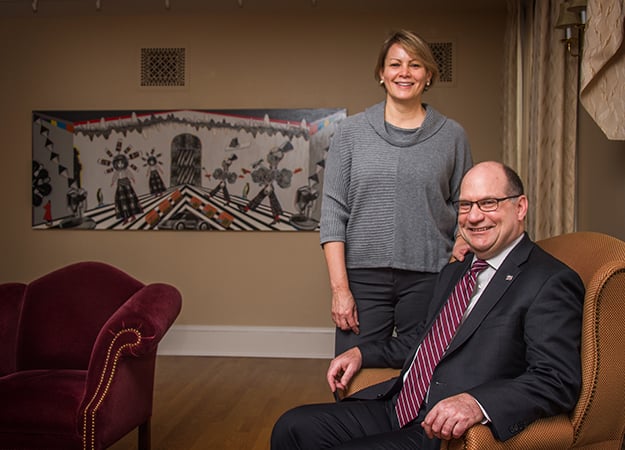
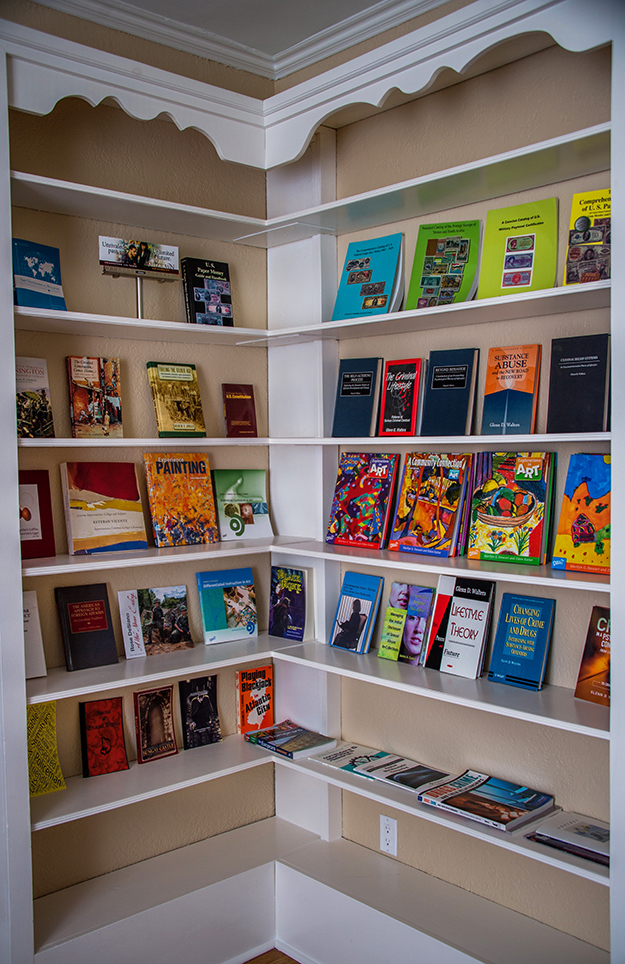
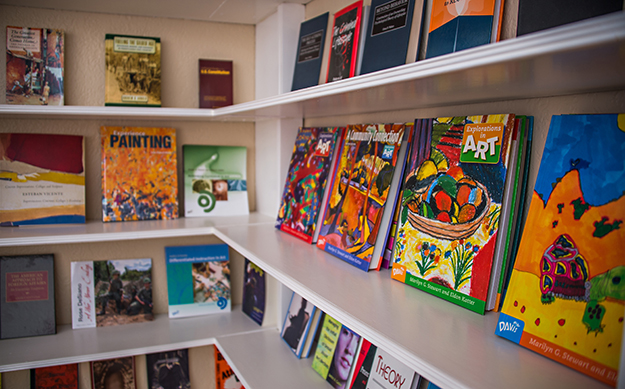
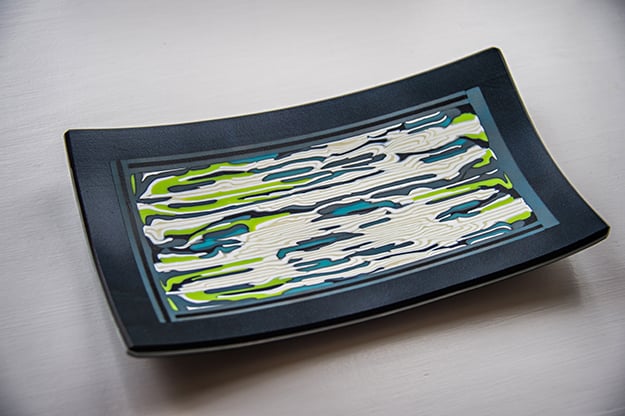
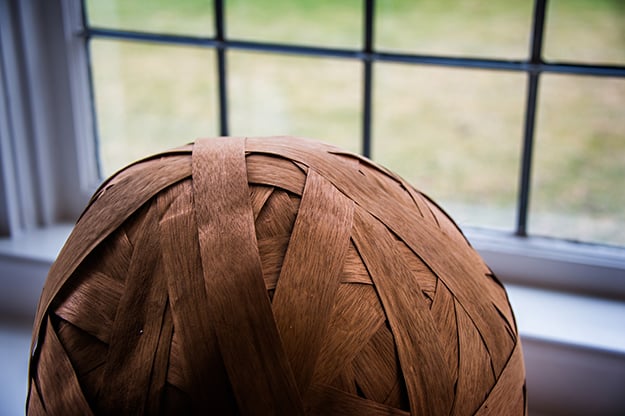
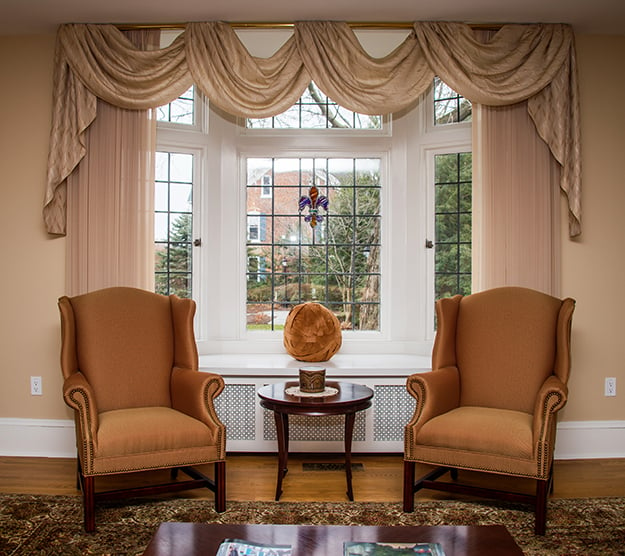
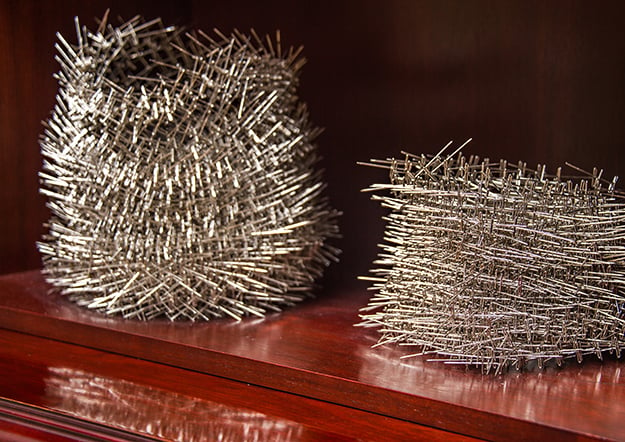
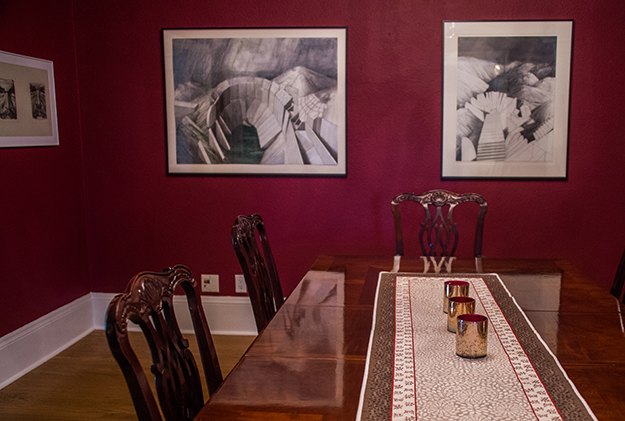
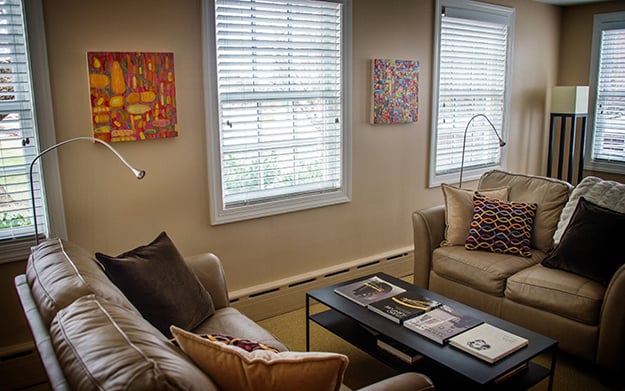
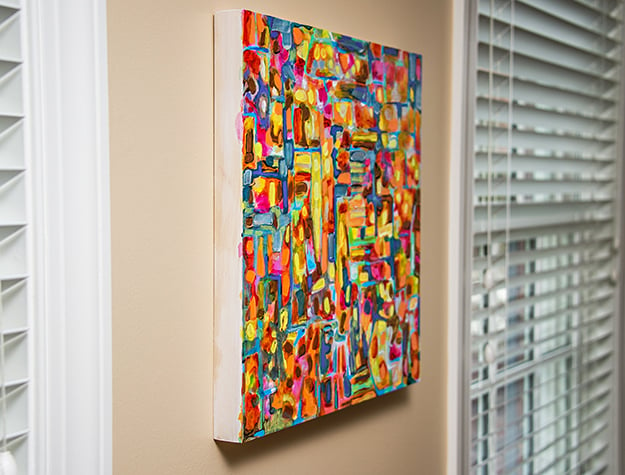
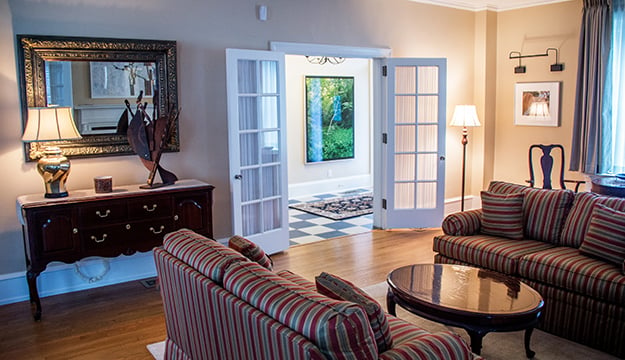
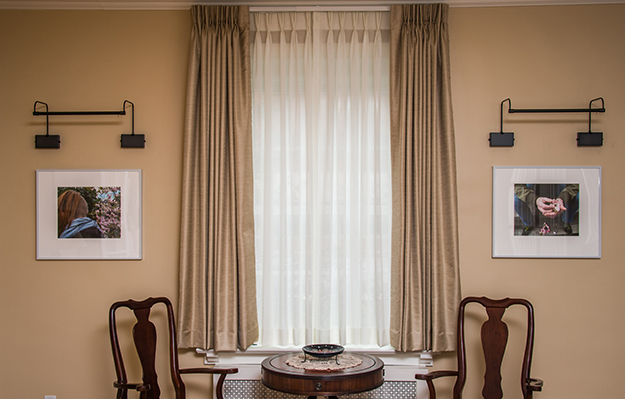
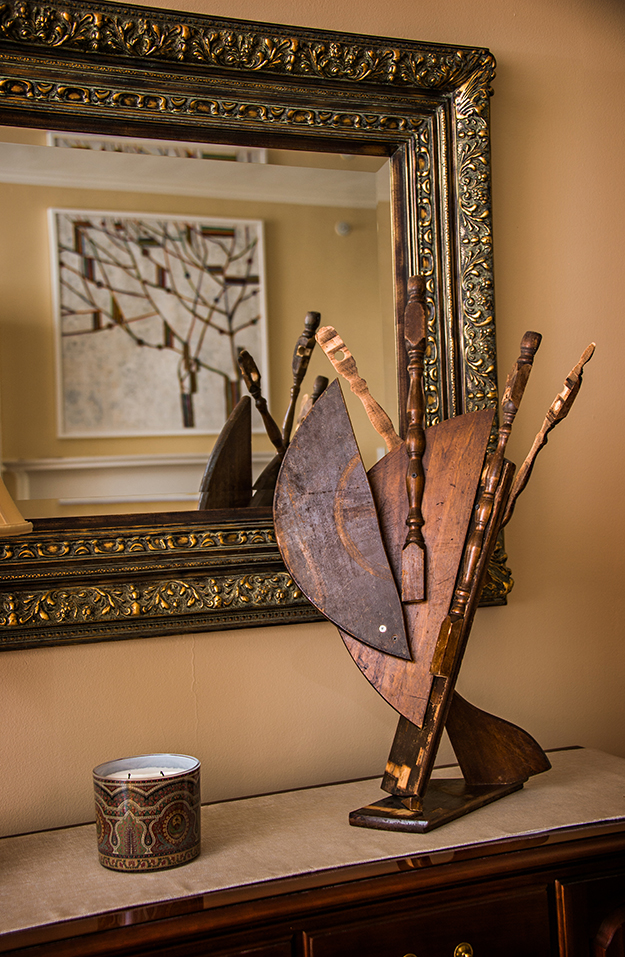
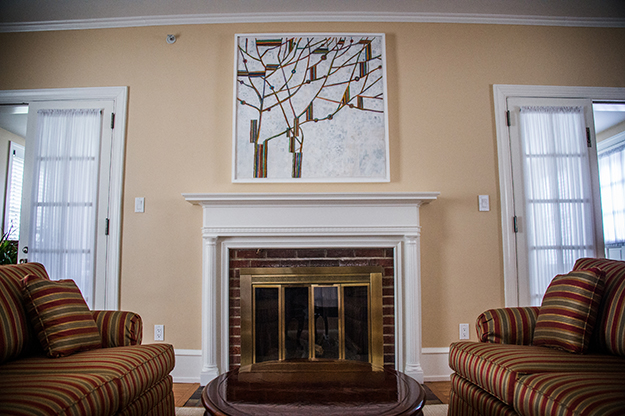
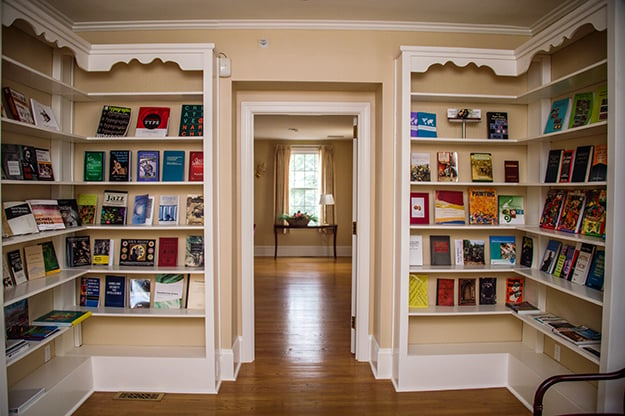
Photos by John A. Secoges, Secoges Photographics








